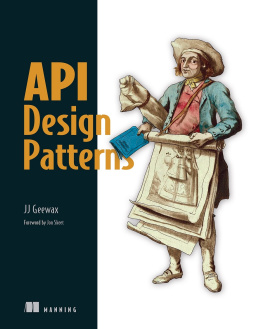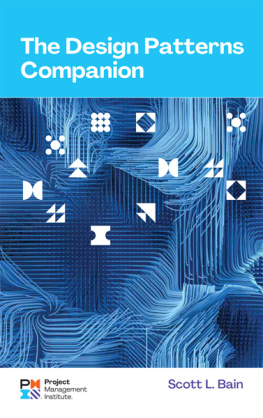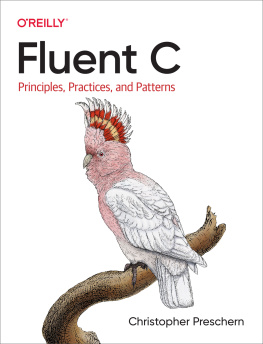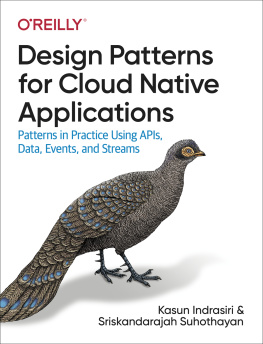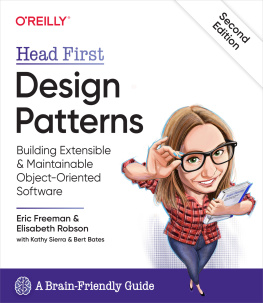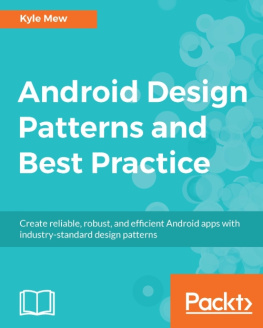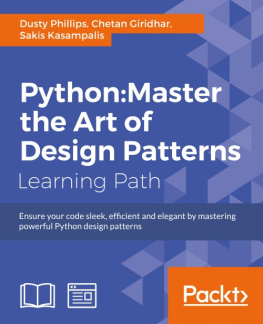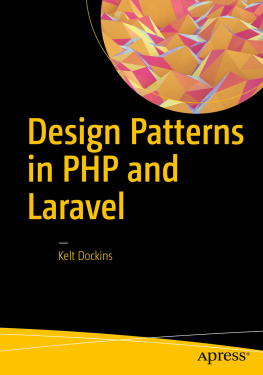JJ Geewax - API Design Patterns
Here you can read online JJ Geewax - API Design Patterns full text of the book (entire story) in english for free. Download pdf and epub, get meaning, cover and reviews about this ebook. year: 2021, publisher: Manning Publications, genre: Romance novel. Description of the work, (preface) as well as reviews are available. Best literature library LitArk.com created for fans of good reading and offers a wide selection of genres:
Romance novel
Science fiction
Adventure
Detective
Science
History
Home and family
Prose
Art
Politics
Computer
Non-fiction
Religion
Business
Children
Humor
Choose a favorite category and find really read worthwhile books. Enjoy immersion in the world of imagination, feel the emotions of the characters or learn something new for yourself, make an fascinating discovery.
- Book:API Design Patterns
- Author:
- Publisher:Manning Publications
- Genre:
- Year:2021
- Rating:5 / 5
- Favourites:Add to favourites
- Your mark:
API Design Patterns: summary, description and annotation
We offer to read an annotation, description, summary or preface (depends on what the author of the book "API Design Patterns" wrote himself). If you haven't found the necessary information about the book — write in the comments, we will try to find it.
Summary
A collection of best practices and design standards for web and internal APIs.
In API Design Patterns you will learn:
- Guiding principles for API patterns
- Fundamentals of resource layout and naming
- Handling data types for any programming language
- Standard methods that ensure predictability
- Field masks for targeted partial updates
- Authentication and validation methods for secure APIs
- Collective operations for moving, managing, and deleting data
- Advanced patterns for special interactions and data transformations
Purchase of the print book includes a free eBook in PDF, Kindle, and ePub formats from Manning Publications.
About the technology
APIs are contracts that define how applications, services, and components communicate. API design patterns provide a shared set of best practices, specifications and standards that ensure APIs are reliable and simple for other developers to use. This book collects and explains the most important patterns from both the API design community and the experts at Google.
About the book
API Design Patterns lays out a set of design principles for building internal and public-facing APIs. Google API expert JJ Geewax presents patterns that ensure your APIs are consistent, scalable, and flexible. Youll improve the design of the most common APIs, plus discover techniques for tricky edge cases. Precise illustrations, relevant examples, and detailed scenarios make every pattern clear and easy to understand.
Whats inside
- Guiding principles for API patterns
- Fundamentals of resource layout and naming
- Advanced patterns for special interactions and data transformations
- A detailed case-study on building an API and adding features
About the reader
For developers building web and internal APIs in any language.
About the author
JJ Geewaxis a software engineer at Google, focusing on Google Cloud Platform, API design, and real-time payment systems. He is also the author of Mannings Google Cloud Platform in Action.
Table of Contents
PART 1: INTRODUCTION
- 1 Introduction to APIs
- 2 Introduction to API design patterns
- 3 Naming
- 4 Resource scope and hierarchy
- 5 Data types and defaults
PART 3: FUNDAMENTALS
- 6 Resource identification
- 7 Standard methods
- 8 Partial updates and retrievals
- 9 Custom methods
- 10 Long-running operations
- 11 Rerunnable jobs
- 12 Singleton sub-resources
- 13 Cross references
- 14 Association resources
- 15 Add and remove custom methods
- 16 Polymorphism
PART 5: COLLECTIVE OPERATIONS
- 17 Copy and move
- 18 Batch operations
- 19 Criteria-based deletion
- 20 Anonymous writes
- 21 Pagination
- 22 Filtering
- 23 Importing and exporting
PART 6: SAFETY AND SECURITY
- 24 Versioning and compatibility
- 25 Soft deletion
- 26 Request deduplication
- 27 Request validation
- 28 Resource revisions
- 29 Request retrial
- 30 Request authentication
JJ Geewax: author's other books
Who wrote API Design Patterns? Find out the surname, the name of the author of the book and a list of all author's works by series.

